Have you ever experienced trouble with your roll-n-lock bed cover? The convenience and protection it offers are unbeatable, still, roll n lock bed cover problem is a common issue.
What if we offer you insights to keep your bed cover at its peak performance? Read on to uncover common issues and their solutions.
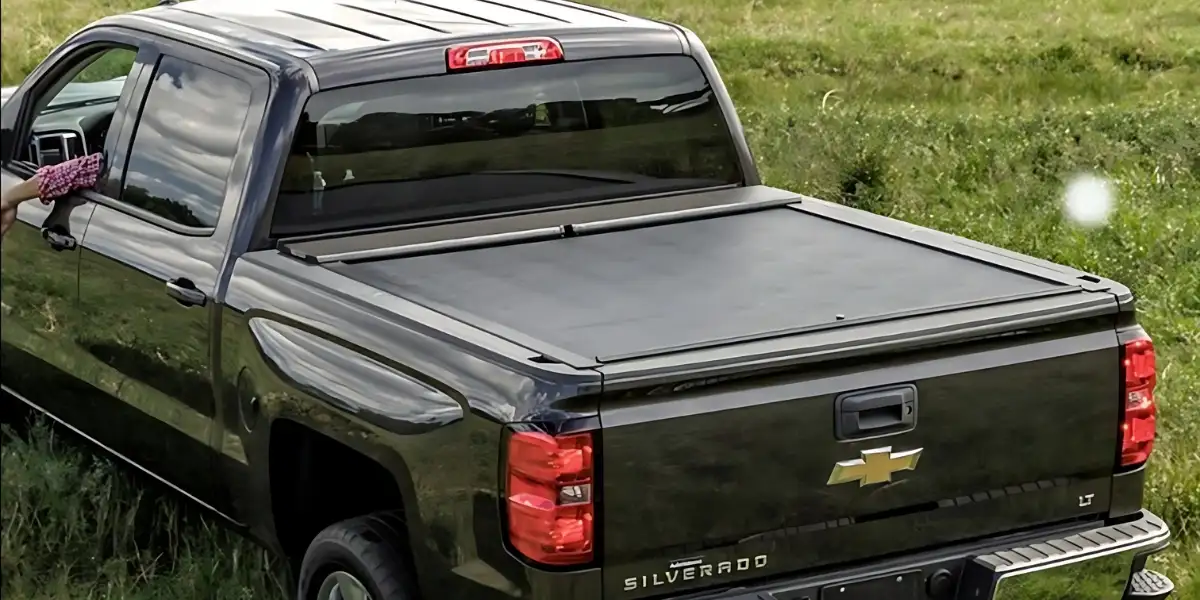
Common Issues with Roll N Lock Bed Covers
Dealing with Difficulty in Opening and Closing the Roll N Lock Bed Cover
Embarking on your journey with a Roll N Lock bed cover presents its own unique set of challenges. One such challenge that can leave you stumped is improper installation.
It’s a common issue that can significantly affect your bed cover’s performance and longevity. Let’s delve into the specifics of this problem and the steps you can undertake to overcome it.
Identifying the Signs of a Misfit
First and foremost, you need to recognize when your Roll N Lock bed cover isn’t correctly installed.
You might notice it doesn’t retract or close as smoothly as it should.
Perhaps there’s an unusual gap when the cover is fully closed, or it doesn’t seem to fit snugly around the edges of your truck bed.
These can all be warning signs that your installation process may have gone awry.
Tracing the Origin of the Problem
Once you’ve identified that there might be an issue, the next step is to diagnose where the problem lies.
Begin by inspecting the rails. These should be aligned correctly with the bed of your truck.
If they’re not, it could cause the cover to sit awkwardly or not retract smoothly. Additionally, check if the clamps holding the rails are tight enough.
Loose clamps could lead to instability, causing the cover to move around while you’re driving.
Navigating the Maze of Latch and Lock Mechanisms
The latch and lock mechanisms of your Roll N Lock bed cover are also critical areas that might need your attention.
Make sure the latch catches properly when you close the cover. If it doesn’t, it could lead to the cover not closing all the way or opening unexpectedly.
Similarly, the lock mechanism should turn smoothly and lock securely. If it’s stiff or doesn’t lock, it could be a sign that the lock mechanism was not installed correctly.
The Puzzle of Water Leakage: How to Fix it
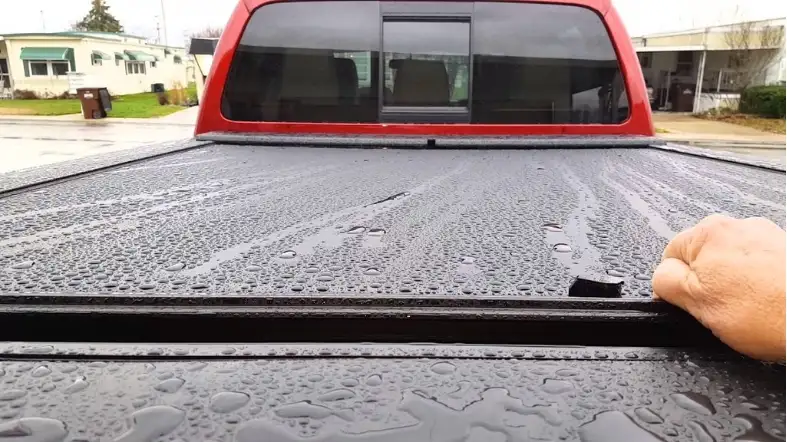
Water leakage is another common issue that can plague your Roll N Lock bed cover. Let’s explore how you can diagnose and resolve this issue.
Spotting the Signs of Water Leakage
Typically, water leakage is a problem that you’ll notice only after it’s rained.
You might find water pooled inside your truck bed, or you may notice dampness or water stains on the bed cover itself.
These signs indicate that water is somehow seeping through your bed cover.
Locating the Source of Leakage
To fix this issue, you first need to pinpoint where the water is entering.
Look for gaps or cracks in the cover itself or around the edges where the cover meets the truck bed.
Pay special attention to the front of the cover, as this is a common area for water to get in.
Sealing the Leaks
Once you’ve located the leak, it’s time to seal it. If the leak is coming from a crack or gap in the cover, you can use a waterproof sealant to fix it.
Apply the sealant to the area, making sure to cover the entire crack or gap.
If the leak is around the edges where the cover meets the truck bed, you might need to adjust the fit of the cover.
Make sure it’s sitting snugly against the edges of the bed and that the clamps holding it in place are tight.
Dealing with Difficulty in Opening and Closing the Roll N Lock Bed Cover
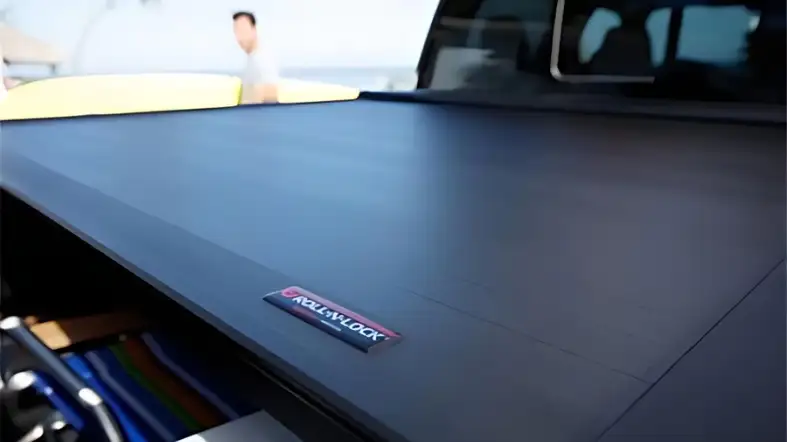
Identifying the Problem with Your Roll N Lock Bed Cover
As a first step, you’ll need to thoroughly investigate the issue you’re facing with your Roll N Lock bed cover.
Is the cover stuck in a certain position? Is the retractable mechanism not responding to your commands? These details can help pinpoint the exact problem.
Begin by thoroughly inspecting the cover. Look for any visible damage or wear and tear that might be causing the problem.
Pay particular attention to the latch mechanism and the tracks on either side of the truck bed.
A small piece of debris or a misaligned track can cause significant issues with the operation of your bed cover.
Lubricating the Tracks
If your cover is not sliding smoothly, it may be due to friction in the tracks.
Over time, dirt and debris can build up in these areas, causing the cover to stick. You should clean these tracks regularly to maintain optimal functionality.
Start by removing the cover from the truck bed, if possible. If it’s stuck in place, try to clean the tracks as best you can without removing the cover.
Use a soft brush to gently remove any loose debris from the tracks.
Next, use mild detergent and warm water to clean the tracks more thoroughly.
Apply the detergent solution to a cloth or sponge and wipe down the tracks. Be careful not to scratch or damage the tracks during this process.
After cleaning, it’s time to lubricate the tracks. Using a silicone-based lubricant, apply a small amount to the tracks.
Make sure the lubricant is evenly distributed along the entire length of the track. This should help the cover to slide more smoothly.
Checking the Latch Mechanism
A faulty latch mechanism can prevent the Roll N Lock bed cover from opening or closing correctly.
If your cover isn’t operating as it should, inspecting and adjusting the latch may be necessary.
The latch mechanism is located at the tailgate end of the bed cover. Check for any visible signs of damage or wear.
If the latch is not engaging or disengaging correctly, it may need to be adjusted or replaced.
To adjust the latch, loosen the screws that secure it in place. Adjust the latch’s position until it engages and disengages smoothly.
Once you’ve made the necessary adjustments, tighten the screws to secure the latch in place.
If the latch is damaged or worn out, it may need to be replaced. Replacement parts can be ordered directly from Roll N Lock or an authorized dealer.
Verifying the Retraction Mechanism
The retraction mechanism is another crucial part of the Roll N Lock bed cover.
If the cover isn’t retracting or closing as it should, there may be an issue with this part of the system.
Start by checking the tension adjuster. This is typically located on the side of the housing unit.
If the tension is too loose or too tight, it can affect the retraction of the cover. Adjust the tension as needed to ensure smooth operation.
Next, inspect the retraction mechanism itself. Look for any signs of damage or wear that might be causing the problem.
If necessary, you may need to replace the retraction mechanism. As with the latch, replacement parts can be ordered directly from Roll N Lock or an authorized dealer.
Seeking Professional Help
If you’ve tried the steps outlined above and are still experiencing problems with your Roll N Lock bed cover, it may be time to seek professional help.
Contact a local truck accessory shop or an authorized Roll N Lock dealer for assistance.
They have the expertise and tools necessary to diagnose and repair more complex issues with your bed cover.
Addressing Sagging Issues
In case you observe that your Roll N Lock cover is sagging, this could be due to two common reasons: misalignment and weight limit exceedance.
When the Roll N Lock cover isn’t aligned correctly with your truck bed rails, it can result in sagging.
Luckily, the solution is straightforward. Simply readjust the alignment of your Roll N Lock cover, and it should resolve the issue.
Additionally, Roll N Lock covers have a specified weight limit they can hold before they start to sag.
So, if you’ve been adding more and more items to your truck bed, check the weight specifications for your Roll N Lock cover.
If your cargo’s weight exceeds the cover’s capacity, it may be time for an upgrade.
Costs Associated with Servicing
The cost of servicing Roll N Lock bed cover problems can vary depending on the specific issue and the location of the repair shop.
On average, the cost of repairing Roll N Lock bed cover problems ranges from $50 to $500.
It is recommended to contact a certified Roll N Lock dealer or repair shop to get an accurate estimate of the cost of servicing your bed cover.
Regular maintenance and proper care of your Roll N Lock bed cover can help prevent potential problems and save you money in the long run.
Experiencing Water Leaks? Your Roll N Lock Bed Cover Might be the Culprit
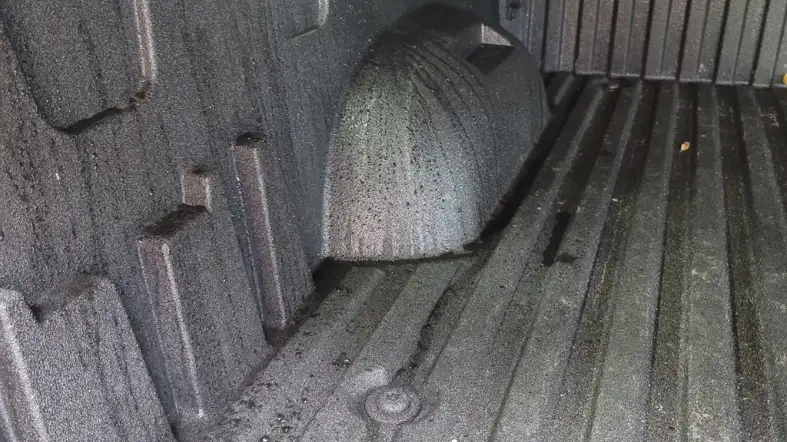
Identifying the Issue
Spotting a water leak in your truck bed might indicate a problem with your Roll N Lock bed cover.
To confirm this, you need to inspect your bed cover closely. Look for signs of damage, wear, or trapped debris that could be affecting its function.
If the water leakage is indeed due to your Roll N Lock bed cover, it could be due to several issues like poor installation, improper maintenance, or physical damage.
Fixing Misalignment
One common issue that could cause a water leak is a misalignment of your Roll N Lock bed cover.
If your bed cover isn’t properly aligned with your truck bed rails, this could leave gaps for water to seep through.
To fix this issue, you need to readjust the alignment of your Roll N Lock bed cover.
This is a straightforward process that should effectively resolve the issue if misalignment is the culprit.
Checking the Weight Limit
Another potential reason for water leaks could be exceeding the weight limit of your Roll N Lock cover.
The covers have a certain weight capacity, and overloading them can lead to sagging, which in turn can cause water to accumulate and leak into your truck bed.
If this is the case, reducing the load on your cover or upgrading to a heavier-duty model could be necessary to solve the problem.
Regular Maintenance
Proper maintenance is crucial to prevent problems like water leaks. To maintain your Roll N Lock bed cover, clean it regularly with soapy water, and use protective products to guard against damaging elements.
Make sure it’s secure when not in use, lubricate its moving parts, and avoid overloading it.
The Problem of Jammed Locks in Roll N Lock Bed Covers
You might notice that the lock on your Roll N Lock bed cover isn’t functioning as smoothly as it once did. The key refuses to turn, or the lock sticks stubbornly in place.
Don’t worry – you’re not alone. Many Roll N Lock users encounter this issue. However, to solve this problem, you first need to understand what’s causing it.
Jammed locks are usually due to one of two main issues: a build-up of dirt and grime or a mechanical problem with the lock itself. Let’s delve into each of these possibilities.
Dirt and Grime Build-Up
If you frequently use your truck for off-roading or driving in dirty or dusty environments, grime can accumulate in the lock mechanism over time.
This build-up can impede the lock’s normal functioning, causing it to stick or jam.
One clue that dirt and grime may be your problem is if the lock’s operation has gradually worsened over time.
In this case, cleaning the lock might be your best bet. Here are the steps to do it:
- Gather Your Cleaning Supplies: You’ll need a can of compressed air, a small brush (a toothbrush will do), and some lock lubricant.
- Use Compressed Air: Aim the compressed air at the keyhole and give it a few short blasts. This action should dislodge any loose dirt or dust.
- Brush Out the Lock: Next, use your brush to scrub the keyhole and the surrounding area, removing any remaining dirt. Be gentle to avoid damaging the lock mechanism.
- Apply Lubricant: Once you’ve cleaned out as much dirt as possible, apply a small amount of lock lubricant to the keyhole.
- Operate the Lock: Finally, try operating the lock with your key. If dirt was the problem, the lock should now operate more smoothly.
Mechanical Lock Issues
If cleaning doesn’t resolve the issue, the problem might be a mechanical one. The internal components of the lock could be misaligned, broken, or worn out.
Mechanical issues are often apparent if the lock suddenly stops working or if the key is unable to engage the lock mechanism. In this scenario, you might need to replace the lock. Follow these steps:
- Purchase a Replacement Lock: Ensure the replacement is compatible with your Roll N Lock model. You can typically find this information in the product description or by consulting with the seller.
- Remove the Old Lock: Use a screwdriver to carefully remove the screws holding the lock in place. Once you’ve removed these, you should be able to take out the old lock.
- Install the New Lock: Position the new lock in the hole left by the old one. Secure it in place using the screws that came with the replacement.
- Test the New Lock: Once you’ve installed the new lock, test it with the keys that came with the replacement. If installed correctly, the lock should operate smoothly.
Potential Issues with the Retractable Mechanism of Roll N Lock Bed Covers
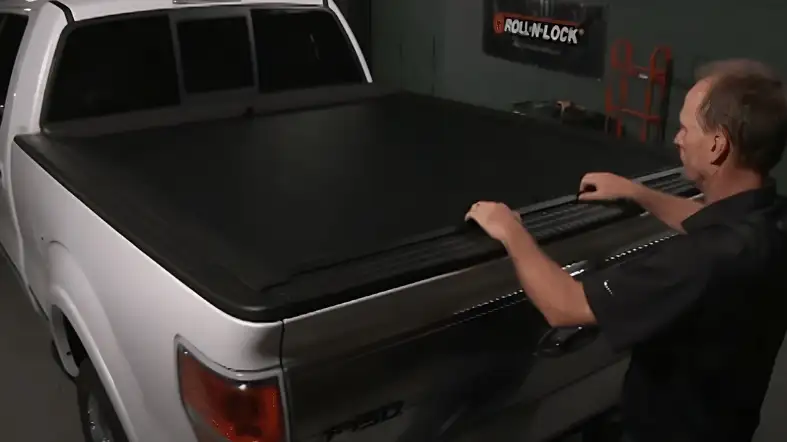
When you’re operating your Roll N Lock bed cover, you might come across some glitches in its retractable mechanism.
This kind of hitch is not uncommon, but don’t let it stress you out. I’m here to help you understand the potential issues and guide you through the solutions.
The Cover Doesn’t Retract Fully
Occasionally, your Roll N Lock bed cover might refuse to roll back completely.
This behavior could be due to an obstruction or a misalignment in the track. Here’s how you diagnose and fix this problem:
- Inspect the Track: First, check the track for any obstructions like dirt, leaves, or other debris. Pay particular attention to the areas where the cover seems to be getting stuck.
- Remove Obstructions: If you find any debris in the track, remove it carefully. You could use a soft cloth or a small brush for this purpose.
- Check the Alignment: If the track is clean, but the problem persists, the track may be misaligned. Look for any signs of bending or warping.
- Align the Track: If misalignment is the issue, you might need to realign the track. Loosen the screws holding the track in place, adjust the track until it’s straight, and then tighten the screws back up.
The Cover Sticks or Slows Down
Another issue you may encounter is that the cover sticks or slows down when you’re trying to retract it.
This issue is often due to friction between the cover and the track. Here’s how you can tackle it:
- Inspect the Track and Cover: Start by looking for any signs of damage or wear on both the track and the cover. Damaged areas might create friction and impede movement.
- Repair or Replace Damaged Parts: If you find any damaged parts, they may need to be repaired or replaced. Always refer to your Roll N Lock manual or consult a professional for guidance on this process.
- Lubricate the Track: If the track and cover appear to be in good shape, yet the cover isn’t moving smoothly, you might need to lubricate the track. Use a silicone-based lubricant designed for use with Roll N Lock bed covers. Apply the lubricant along the track and then operate the cover a few times to distribute the lubricant evenly.
The Locking Mechanism Isn’t Engaging
If the locking mechanism isn’t engaging, the cover might not stay retracted. This problem is typically due to a fault within the locking mechanism itself. Here’s what you can do:
- Check the Locking Mechanism: Inspect the locking mechanism for any obvious signs of damage or wear.
- Lubricate the Locking Mechanism: Sometimes, a bit of lubrication can help a sticky locking mechanism. Use a small amount of the same silicone-based lubricant you used for the track.
- Replace the Locking Mechanism: If lubrication doesn’t help, you may need to replace the locking mechanism. This task can be a bit tricky, so if you’re unsure, it’s best to take your vehicle to a professional.
Are the Solutions for Truxedo Pro X15 Problems also Applicable to Roll N Lock Bed Covers?
The truxedo pro x15 troubleshooting tips may not be applicable to roll N lock bed covers as they are two different products. Each brand has its unique features and mechanisms that require specific solutions for any problems that may arise. Therefore, it is essential to refer to the manufacturer’s instructions and guidelines for effective troubleshooting.
FAQs
Why Is My Roll N Lock Bed Cover Not Retracting Properly?
If your Roll N Lock bed cover isn’t retracting properly, it may be due to debris caught in the tracks or due to a mechanical failure within the retraction system.
Regular cleaning and maintenance can prevent these issues.
Why Is My Roll N Lock Cover Freezing During Cold Weather?
The Roll N Lock bed cover can freeze in extremely cold weather if water gets into the mechanism or seals.
This can be prevented by keeping the cover and its components dry and using a silicone lubricant for better operation.
My Roll N Lock Bed Cover Is Not Locking Correctly, What Should I Do?
If your Roll N Lock bed cover isn’t locking correctly, it could be due to a misaligned latch or a damaged locking mechanism.
Check these components for any visible issues and consider seeking professional assistance if necessary.
Final Words
With the right knowledge and proactive measures, you can overcome the challenges that may arise with your roll-n-lock bed cover.
By staying informed about common issues and their solutions, you can ensure the optimal functionality and longevity of your bed cover.
Keep these tips in mind and enjoy the seamless performance and peace of mind that comes with a well-maintained roll-n-lock bed cover.
